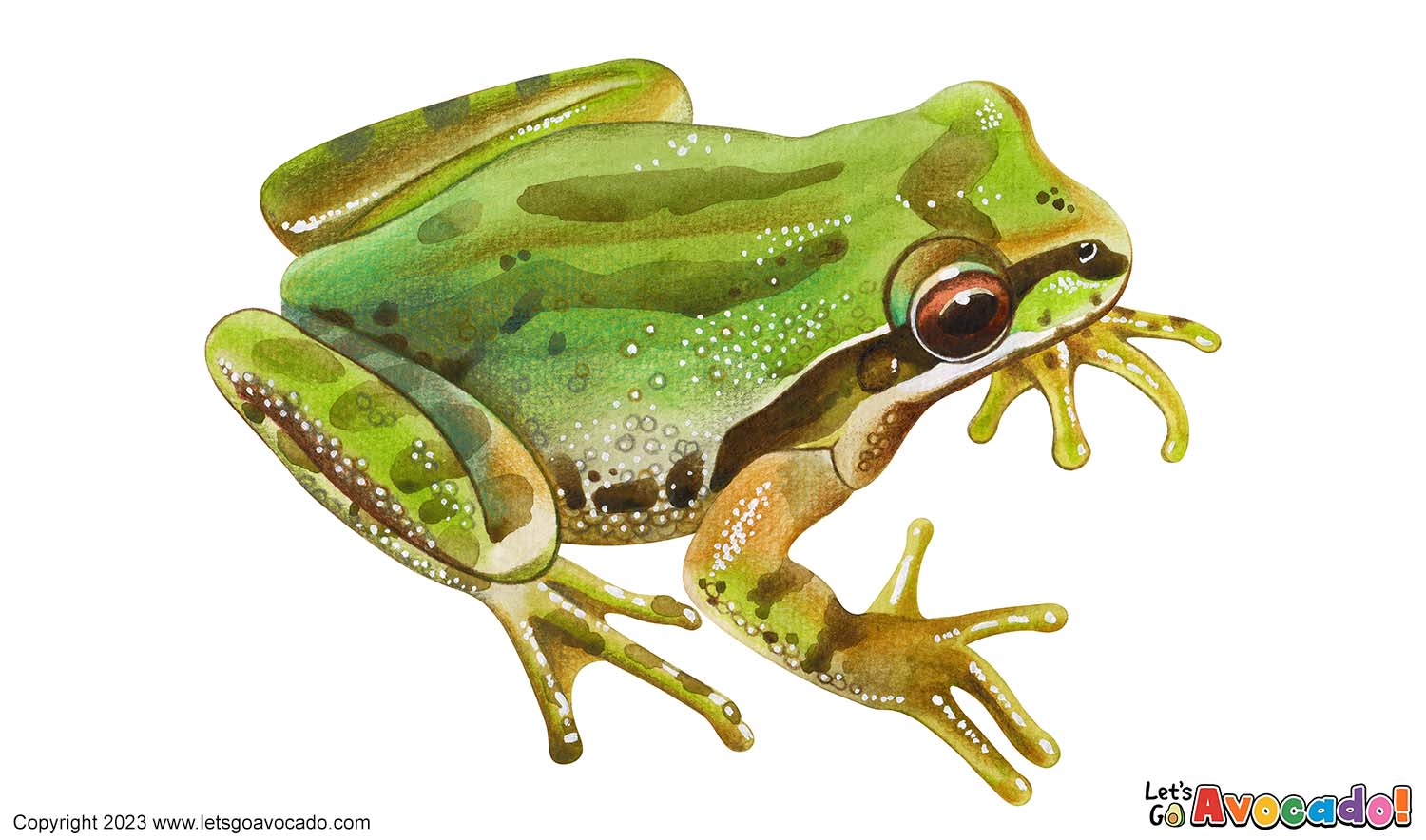

Pacific Tree Frog
Pacific Chorus Frog
Pseudacris regilla
This page may contain affiliate links.
Read our disclosure and privacy policy here.
The Pacific Tree Frog, also known as the Pacific Chorus Frog, is a small and colorful amphibian that is widely recognized for its distinct call. These frogs are found in various habitats across the western United States and Canada, including forests, grasslands, wetlands, and even urban areas. Pacific Tree Frogs have a vibrant range of colors, including shades of green, brown, and sometimes even blue or gray. They have a small size, typically reaching around 1.5 to 2.5 inches in length. They are well-adapted to living near water and can be found in ponds, marshes, and streams. The Pacific Tree Frog’s distinct vocalizations, including their iconic “ribbit” call, are not only a common sound of spring but also serve as a means of communication and attracting mates. They are known for their ability to produce a variety of calls, including trills, chirps, and other unique vocalizations.
Pacific Tree Frog
Common Name
Other Names
Latin Name
Distribution
Appearance
Size
Habitat
Behavior
Diet
Lifecycle
Vocalization
Defense Mechanisms
Ecological Importance
ConservationThe act of protecting and preserving natural resources and the environment. Conservation efforts are important to protect beavers and their habitats. Learn More Status

There’s a lot to explore right where we are, in our own neighborhoods and backyards! Join us while we get off the couch and explore the everyday wonders of nature, science, space, engineering, art, and anything else we stumble upon during on our adventures.







